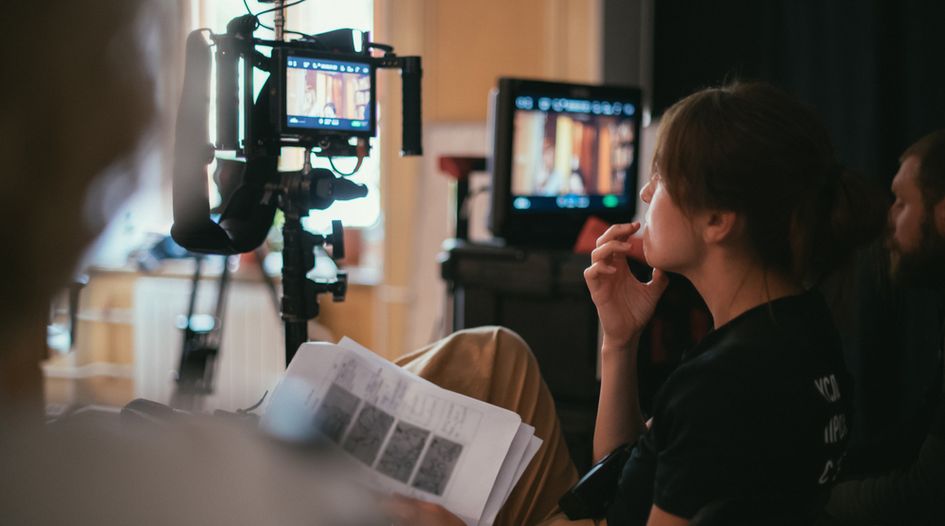Delhi High Court rules on intricate underlying rights ownership in film dispute

Under Indian law, copyright can lie in:
- original literary, dramatic, musical and artistic works;
- cinematographic films; and
- sound recordings.
All of these types of work are separate and independent of one another. While certain creations fall squarely within a single category, others can span multiple. For example, a painting qualifies for copyright protection as an artistic work. However, a song encompasses several categories of protection: the music can be protected as a musical work, the spoken or sung words as a sound recording and the lyrics themselves as a literary work.
Similarly, a cinematographic film is a bundle of independent creations that qualify for protection independently of one another and under several categories. While a film’s producer is considered to be the first owner of the copyright in the film per se, this does not necessarily extend to the copyright in the script or screenplay, especially in cases where the producer and scriptwriter are different individuals. This issue was recently considered and judged by a single bench of the Delhi High Court in RDB and Co HUF v HARPERCOLLINS Publishers India Private Limited [CS(COMM) 246/2021].
Case background – Nayak is novelised
This case involved legendary Indian filmmaker Satyajit Ray, who is globally acclaimed to be one of the greatest filmmakers of the 20th century. He wore several hats in his lifetime: author, composer, director, documentary filmmaker, essayist, illustrator, lyricist, magazine editor and screenwriter, among others.
The plaintiff, RD Bansal, commissioned Satyajit Ray to write the screenplay for and direct the Hindi film Nayak, which was released in 1966. In 2018, Bhaskar Chattopadhyay sought copyright permission from Satyajit Ray’s son, Sandip Ray, and novelised the film’s screenplay, which the defendant (HarperCollins) later released. The plaintiff claimed to be the screenplay’s owner and alleged infringement under the Copyright Act 1957.
The issue before the court was simple. Who owns the copyright for a film’s screenplay if the author was commissioned to write it by the film’s producer? Is it the producer of the film, or the author of the screenplay?
Arrangements under the Copyright Act
The Copyright Act 1957 recognises the contract-of-service and contract-for-service arrangements between authors and first owners of copyright. In cases where a work is created during an author’s employment under a contract of service, the employer – in the absence of any agreement to the contrary – is regarded as the first owner of the work’s copyright. Under a contract of service, there is no requirement to have a specific assignment agreement with the employee for each work, as the copyright shall automatically subsist in the employer.
On the other hand, in cases where the work is created during the author’s employment under a contract-for-service arrangement, the independent contractor – again, in the absence of any agreement to the contrary – is regarded as the first owner of the copyright. In this situation, assignment of ownership of the work is required for the employer to be entitled to its rights.
The court’s decision
Before delving into the issue at hand, the court recorded certain facts, including that:
- the plaintiff produced the film Nayak;
- the plaintiff had contracted with Satyajit Ray to write its screenplay;
- Satyajit Ray wrote the screenplay in its entirety; and
- the defendant had not obtained a licence from the plaintiff before turning the film into a novel.
The court stated that a screenplay was a literary work by virtue of Section 13(1)(a) of the Indian copyright statute and was “unaffected by the separate copyright in the cinematograph film itself, which, unquestionably, vests in the plaintiff as its producer”. Thus, Satyajit Ray was held to be “the first owner of the copyright”. The plaintiff’s contention about owning the copyright in the screenplay was rejected.
The impugned novel that the defendants published was found to be a literal copy of Satyajit Ray’s screenplay. As the first owner of the screenplay’s copyright, Satyajit Ray – and his legal heir Sandip Ray – possessed the right to novelise the screenplay. It was therefore held that “the assignment of the right to novelise the screenplay of the film… in favour of the defendant is, therefore, wholly in order and in accordance with the provisions of the [Copyright] Act”.
Key takeaways
This case clearly establishes that the right to novelise the underlying work in a cinematographic film is independent of the copyright held in the cinematographic film itself. Further, this right would continue to belong to the author of the underlying works unless it is specifically assigned to the producer through an agreement.
The findings in this case shed light on the intricacies involved in copyright assignment. All rights in the various works in a cinematographic film do not, by default, lie with the producer. The first owner must ensure that rights in any work created under a contract for service are specifically, individually and irrevocably assigned.
IAM recommends
Rubik’s Cube ruling provides clarity for IP portfolio managers
The EU’s new proposal throws up new IP challenges for AI data mining
Holistic IP strategy layering multiple forms of protection covers innovation at Waymo
This is an Insight article, written by a selected partner as part of IAM's co-published content. Read more on Insight
Copyright © Law Business ResearchCompany Number: 03281866 VAT: GB 160 7529 10

